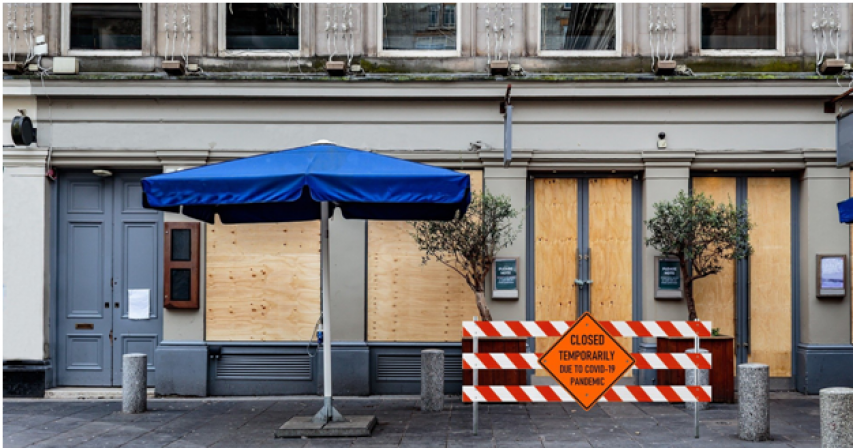The Impact of Covid-19 On the Retail Sector
- 4 years ago

Like the rest of the world, the business sector is reeling from the disruption caused by Covid-19. The virus has presented challenges that no amount of financial planning could foresee or mitigate against. Further, it is becoming increasingly clear that the effects of this pandemic may have lasting effects on long after it ends.
Amidst all this, the retail sector has found itself caught in a storm of change. In essence, the rule book has been thrown out of stores. Most businesses are now simply adapting to the situation as it evolves and doing the best that they can to stay above water.
At present and going forward, we are likely to see some changes in the retail landscape due to Covid-19. Let's explore some of them.
Shutdowns
In the early stages of the Coronavirus, most countries instituted movement restrictions and some went into complete lockdown. While there was certainly a lot of panicking buying, it was limited to essential items. Retailers in fashion and other non-essential goods were forced to shut down temporarily which resulted in massive losses
Even with restrictions slowly being lifted and life starting to regain some normalcy, there is still an air of uncertainty. Thousands of people have lost their jobs and their purchasing power with it. Therefore, while retail stores are opening up for business, they are still in the doldrums of low sales.
So, while shutdowns were intended to be a short-term measure it is likely that some retailers may shut down for good. Major brands like Debenhams department stores are facing imminent liquidation and many others have filed for bankruptcy. Some of your favorite brands may soon no longer be available.
Restructuring of Brands
As opposed to closing all their stores and sending thousands of their employees home, some retail brands are opting to restructure. Their aim is to cut costs which have become untenable given the poor business climate. What will that look like, for brands, you ask?
For starters, most troubled brands are choosing to operate fewer high-performing outlets. An example of this is the high-end American fashion retail brand, the Brooks Brothers. After filing for bankruptcy, they will only operate 199 stores from their previous total of 250. Smaller brands are also moving their operations fully onto online platforms.
Other anticipated restructuring moves include mergers and buy-outs of companies in financial distress. Unfortunately, more jobs are also likely to be lost during these adjustments.
Automation

The fact is, the pandemic is still upon us. Until a vaccine is available, there will still be a need for businesses to follow stipulated health guidelines. With this in mind, most companies are moving towards automating their services.
The use of robotics is an example of some of the preventative measures that businesses are exploring. Tasks like packaging or loading and unloading of merchandise are being assigned to innovations like SCARA robots. The aim is to reduce the points of contact as much as possible in the interest of protecting both staff and their consumers.
As a shopper, you may also experience changes such as:
● Online menus at restaurants
● More self-checkout stations at stores
● Automated temperature scans at store entrances
Changes in Consumer Habits
Consumers' buying habits have changed a great deal. Due to economic uncertainty, most people are limiting their spending to a basic level instead of splurging. However, there are others who have resorted to shopping to calm their nerves during the stay-at-home period. Suffice to say that sales are no longer as predictable as before.
Online shopping has now gained prominence more than ever. Before Covid-19, retail therapy involved trying clothes and shoes at stores. Now, however, customers are apprehensive about physical shopping. Retailers that have been unable to change tact and adapt online systems are slowly being edged out.
There is also a change in the kind of items being demanded by consumers. Ordinarily, most people shopped for work clothes and other items that suited on-the-go living. With most people working from home, their needs have changed. Home office furniture, headsets, home gym equipment are some of the products that have shot up in sales.
Product Shortages and Delays

For the first time since hardly anyone can remember, airports fell silent and countries shut down their borders due to Coronavirus. In case you have not been able to find your favorite snack or moisturizer, such restrictions may be the reason behind the shortage.
Limited movement not only hampered retail distribution but also the supply of raw materials. Even though cargo transport remained largely functional, the new health safety protocols slowed down operations. As a result, most brands were faced with logistical challenges that delayed production.
With the resumption of some normalcy, shortages may be alleviated. It is equally encouraging that most factories that were operating at lower capacities are picking up pace. Nonetheless, maintaining a steady supply chain is dependent on there being no more movement restrictions.
Conclusion
The impact of this pandemic on the retail sector is almost too great to quantify. It goes far beyond the monetary aspect. Many lives of those in the industry have been changed and some brands that we hold dear may never recover. All the while anticipated government stimulus packages and hope for a vaccine hang in the balance.
Hopefully, on a more optimistic note, the recovery phase starts soon and the retail sector returns to its robust self.
Comments